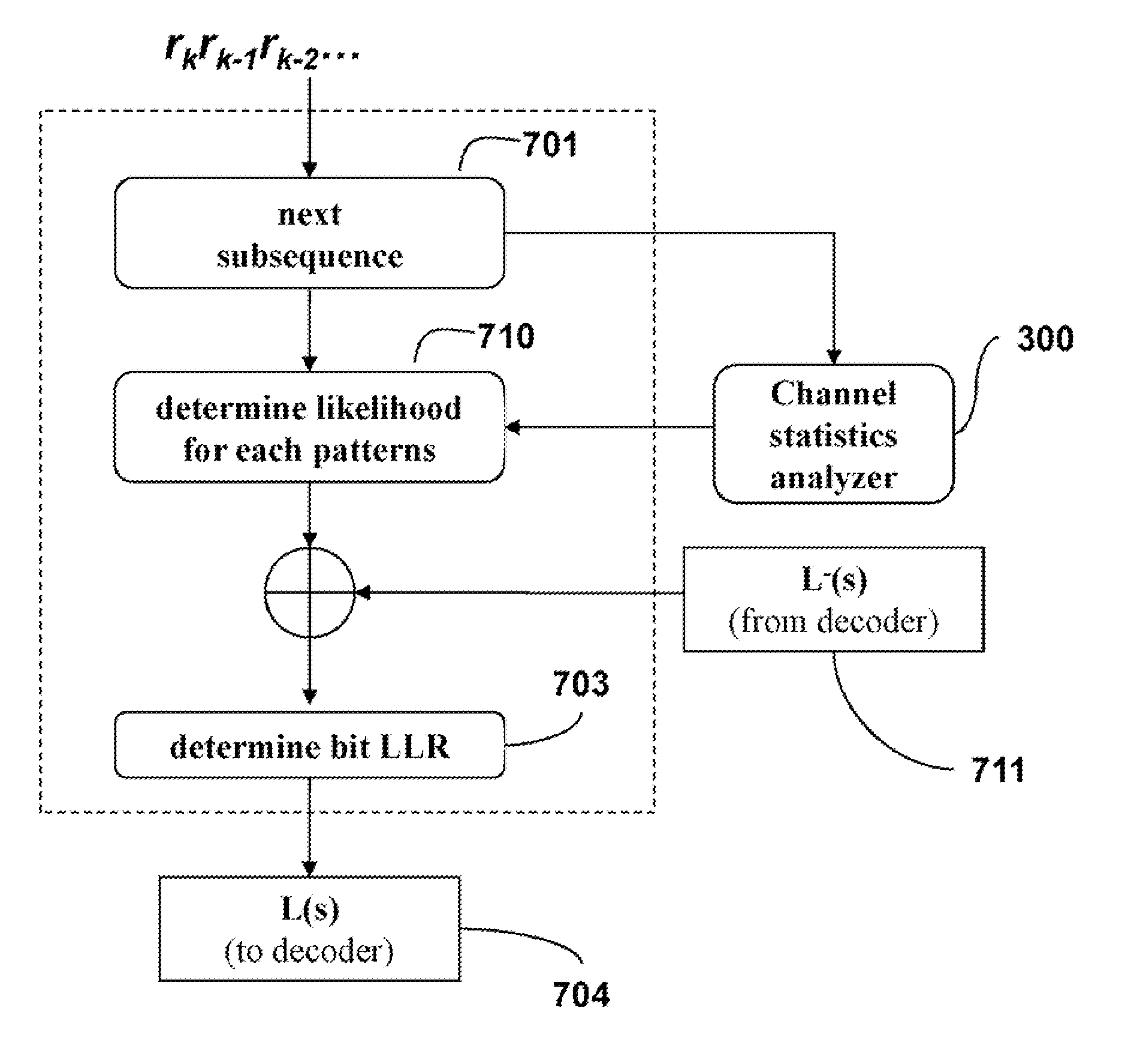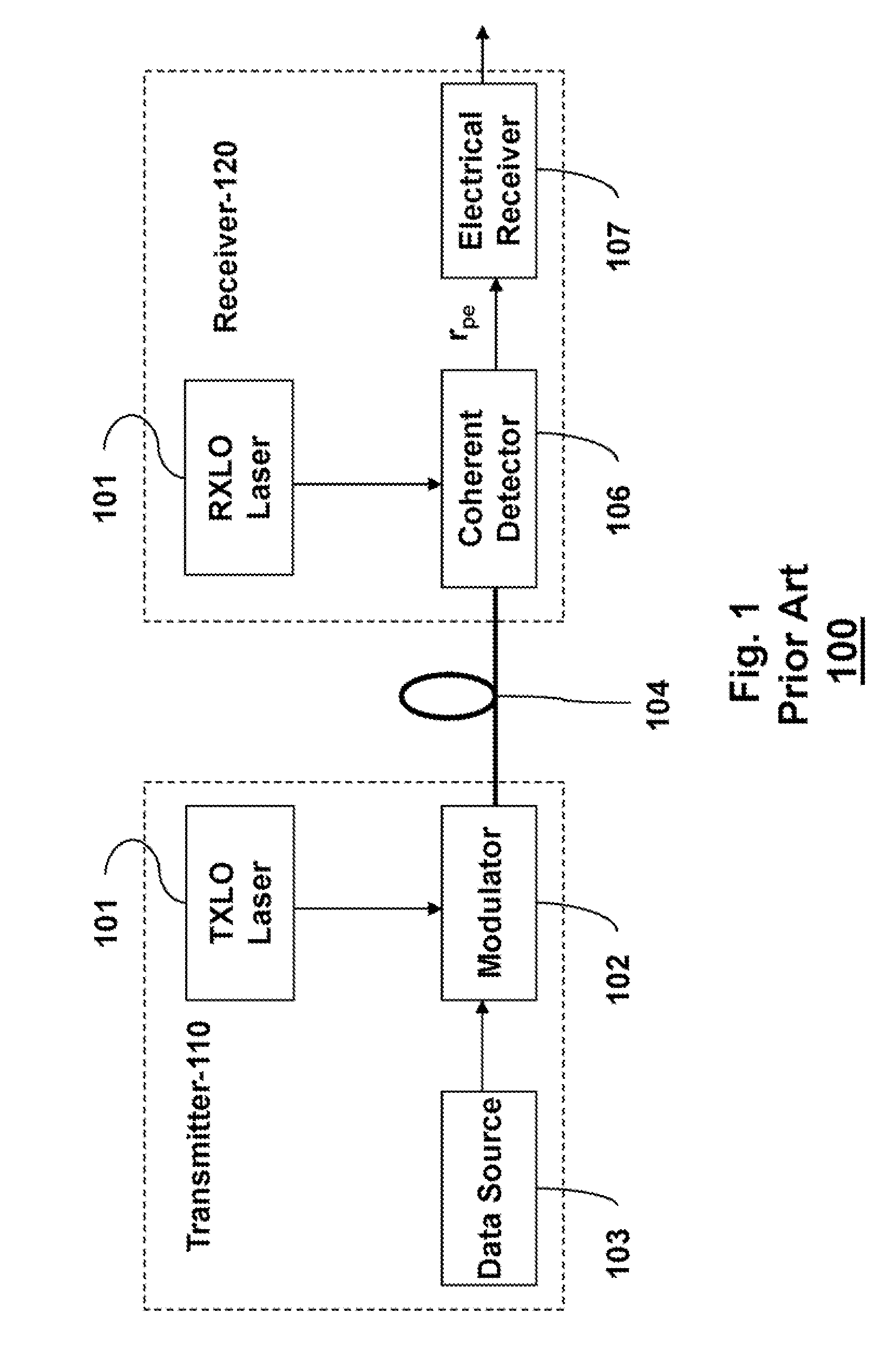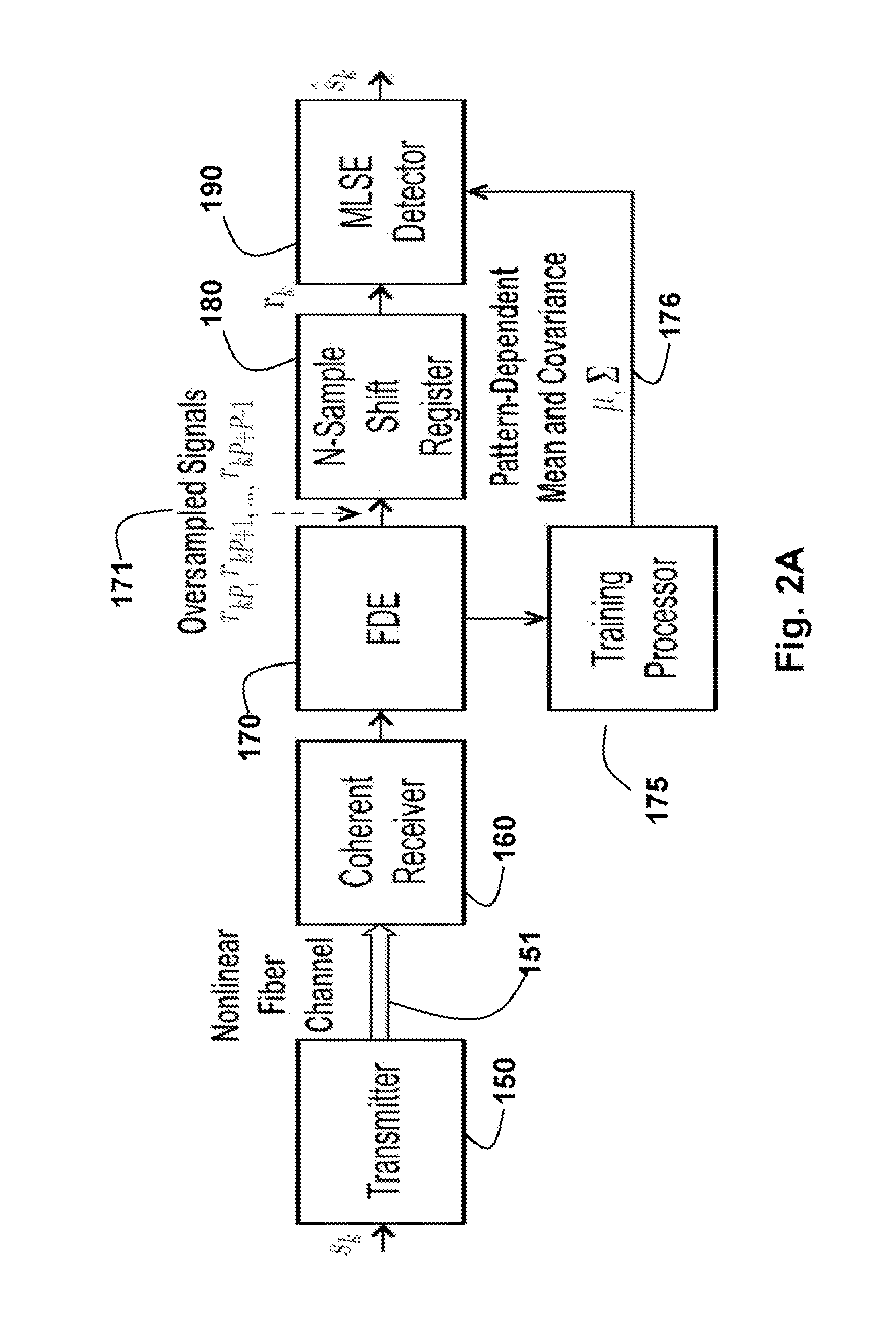Method and System for Equalization and Decoding Received Signals Based on High-Order Statistics in Optical Communication Networks
a technology of optical communication network and received signal, applied in the field of communication network, can solve the problems of nonlinear impairment, affecting the performance of coherent optical transmission system, low bandwidth efficiency, etc., and achieve the effect of improving the performance of the receiver
- Summary
- Abstract
- Description
- Claims
- Application Information
AI Technical Summary
Benefits of technology
Problems solved by technology
Method used
Image
Examples
Embodiment Construction
[0028]Coherent Fiber-Optic Network
[0029]FIG. 2A shows a coherent fiber-optic network with a fractionally-spaced statistical sequence equalizer according to embodiments of our invention.
[0030]A transmitter 150 transmits symbols sk via a nonlinear fiber optical channel 151 to a coherent receiver 160. After digitizing to, e.g., two samples per symbol, residual dispersion is removed using linear frequency-domain equalizer (FDE) 170. The oversampling signal is fed into a shift register 180 to obtain subsequences, and then a statistical Maximum-Likelihood Sequence Estimator (MLSE) equalizer 190 to determine an estimate of the transmitted signal. The MLSE detector 190 uses channel statistics 176, learned by a training processor 175. The channel statistics include high-order statistics, such as mean, covariance, skewness and kurtosis.
[0031]The invention is based on the realization that nonlinear distortion highly depends on patterns in the transmitted signal. Therefore, the statistical sequ...
PUM
 Login to View More
Login to View More Abstract
Description
Claims
Application Information
 Login to View More
Login to View More - R&D
- Intellectual Property
- Life Sciences
- Materials
- Tech Scout
- Unparalleled Data Quality
- Higher Quality Content
- 60% Fewer Hallucinations
Browse by: Latest US Patents, China's latest patents, Technical Efficacy Thesaurus, Application Domain, Technology Topic, Popular Technical Reports.
© 2025 PatSnap. All rights reserved.Legal|Privacy policy|Modern Slavery Act Transparency Statement|Sitemap|About US| Contact US: help@patsnap.com



